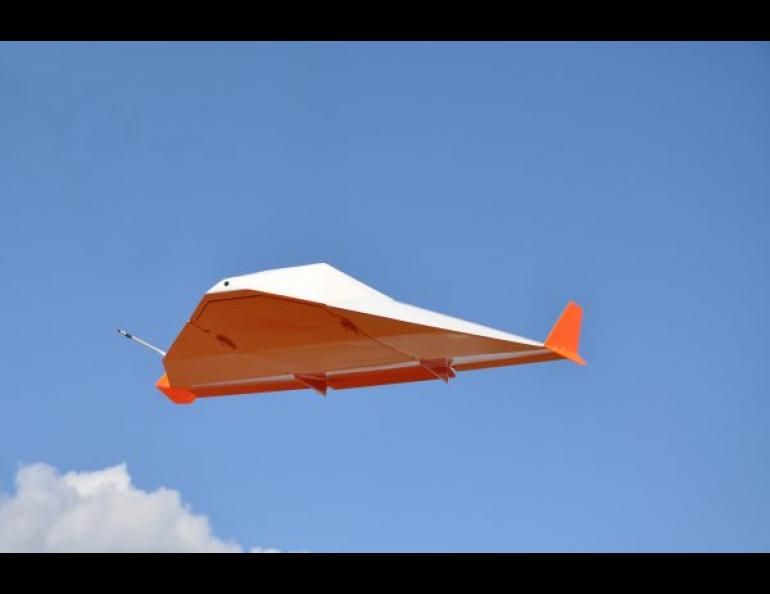
Recent Posts
ACUASI team tests near-space glider
Staff at the University of Alaska Fairbanks helped with a successful test of a high-altitude glider to help evaluate how advanced surveillance technologies could be used to track winged vehicles returning from space.
During the test this fall in Oregon, researchers at UAF’s Alaska Center for Unmanned Aircraft Systems Integration supported the drop of a small unmanned glider from a high-altitude balloon floating at 70,000 feet and helped guide it to a safe landing. The test was part of a NASA-funded project conducted by Near Space Corporation, using a small specially designed unmanned aircraft that can be used to simulate the gliding return of the new generation of space planes.
During the test, a large balloon carried the unmanned aerial vehicle to about 13 miles above the Earth’s surface before a radio signal from the ground released it. The vehicle followed a preprogrammed glide path, under the close supervision of ACUASI pilot Brad Brown in a chase plane, until a pilot on the ground directed the drone in for a safe landing on the runway.
The descent took about 30 minutes. Commercial aircraft operated in the tightly controlled airspace between 18,000 and 40,000 feet, and a significant portion of the test involved the close coordination between the crew and the local FAA air traffic controllers.
The team plans to conduct more tests from even higher altitudes to continue evaluations of the FAA’s surveillance technology and its application to returning spacecraft. NASA’s Flight Opportunities Program is funding Near Space Corporation to perform high-altitude flight tests of various promising space technologies, including flights with its high-altitude shuttle system.
The test took place Sept. 26 at the UAS test range in Tillamook, Oregon, one of several test ranges in the Pan-Pacific Unmanned Aircraft Systems Test Range Complex. UAF supervises the test range under an agreement with the Federal Aviation Administration. ACUASI’s John “Nevada” Nevadomsky was director for the mission, in charge of procedures and safety.
ON THE WEB: http://acuasi.alaska.edu/node/9, http://nsc.aero/news/
Sue Mitchell, University of Alaska Fairbanks Geophysical Institute, 907-474-5823, sue.mitchell@alaska.edu
John Nevadomsky, University of Alaska Fairbanks Geophysical Institute, 907-455-2017, jsnevadomsky@alaska.edu,
Kris Lachenmeier, Near Space Corporation, 503-842-1990 x230, info@nsc.aero






